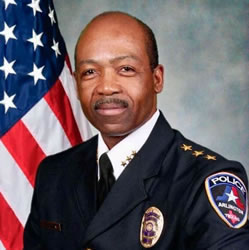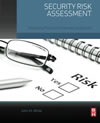 Dr. Theron L. Bowman is a nationally recognized expert in Police Practices, Constitutional Policing, and Law Enforcement Oversight with more than 40 years of experience in public safety leadership, consulting, and litigation support. A former Chief of Police and Deputy City Manager for Arlington, Texas, he is the founder and CEO of The Bowman Group, a consulting firm specializing in police reform, accountability, and compliance monitoring.
Dr. Theron L. Bowman is a nationally recognized expert in Police Practices, Constitutional Policing, and Law Enforcement Oversight with more than 40 years of experience in public safety leadership, consulting, and litigation support. A former Chief of Police and Deputy City Manager for Arlington, Texas, he is the founder and CEO of The Bowman Group, a consulting firm specializing in police reform, accountability, and compliance monitoring.
Dr. Bowman has served as an expert in state and federal cases involving use of force, civil rights, internal investigations, and policy failures. His work spans major U.S. jurisdictions including New York City, Baltimore, Chicago, Memphis, Phoenix, Seattle, and Los Angeles County, and he has advised international policing initiatives in Bosnia, Kosovo, Haiti, Israel, Jordan, Iraq, and Afghanistan.
Litigation Support - Dr. Bowman has served as an expert in state and federal cases involving use of force, civil rights, internal investigations, and policy failures. His work spans major U.S. jurisdictions including New York City, Baltimore, Chicago, Memphis, Phoenix, Seattle, and Los Angeles County, and he has advised international policing initiatives in Bosnia, Kosovo, Haiti, Israel, Jordan, Iraq, and Afghanistan.
Attorneys and agencies retain Dr. Bowman for his deep operational insight, courtroom-tested credibility, and ability to translate complex police practices into clear, objective analysis.
Areas of Expertise:
- Police Use of Force
- Police Misconduct
- Civil Rights
- Constitutional Policing
- Police Oversight
- Police Accountability
- Police Assessment
- Police Promotions
- Racial Bias
- Police Training
- Police Policy
- Police Operations
| - Public Safety
- Security Operations
- Major Events / Crowd Control
- Police Pursuits
- Corruption Investigations
- Police Monitor,
- Fire / Fire Department Promotions
- Management Audit
- Emergency Management
- EMS
- Police Academy Assessment
- Establishing New Police Departments
|
Background Experience - Dr. Bowman holds a Ph.D. and MPA from the University of Texas at Arlington and is a graduate of the FBI National Executive Institute, FBI National Academy, and Senior Management Institute for Police.
A former CALEA Commissioner, Dr. Bowman has trained and advised agencies on constitutional policing, leadership, and accountability. His key areas of expertise include use of force, civil rights, police supervision, misconduct investigations, bias-free policing, and major event security.
He has held leadership roles with the International Association of Chiefs of Police and coordinated security for events such as the Super Bowl and World Series. His reform work includes guiding agencies under DOJ consent decrees and developing policies that strengthen accountability and community trust.
theron.bowman@tbowmangroup.com | (817) 502-9197
View The Bowman Group's Business Consulting Profile.
By: Dr. Theron L. Bowman
Across the country, law enforcement agencies face a critical, evolving challenge: complex and often volatile interactions with youth. Juvenile crime, mental health crises, and community trust demand more than traditional policing can offer. They require specialized training that fuses advanced de-escalation tactics











 Dr. Theron L. Bowman is a nationally recognized expert in Police Practices, Constitutional Policing, and Law Enforcement Oversight with more than 40 years of experience in public safety leadership, consulting, and litigation support. A former Chief of Police and Deputy City Manager for Arlington, Texas, he is the founder and CEO of The Bowman Group, a consulting firm specializing in police reform, accountability, and compliance monitoring.
Dr. Theron L. Bowman is a nationally recognized expert in Police Practices, Constitutional Policing, and Law Enforcement Oversight with more than 40 years of experience in public safety leadership, consulting, and litigation support. A former Chief of Police and Deputy City Manager for Arlington, Texas, he is the founder and CEO of The Bowman Group, a consulting firm specializing in police reform, accountability, and compliance monitoring.
 Cameron Consulting is a physical skills teaching firm that provided contractual instruction to Police Agencies; College Districts; Private Security Companies; Private Corporations and the United States Military for 52 years, having trained approximately 40,000 Enforcement Officers on Arrest Control Tactics and Weaponless Defense.
Cameron Consulting is a physical skills teaching firm that provided contractual instruction to Police Agencies; College Districts; Private Security Companies; Private Corporations and the United States Military for 52 years, having trained approximately 40,000 Enforcement Officers on Arrest Control Tactics and Weaponless Defense. 

